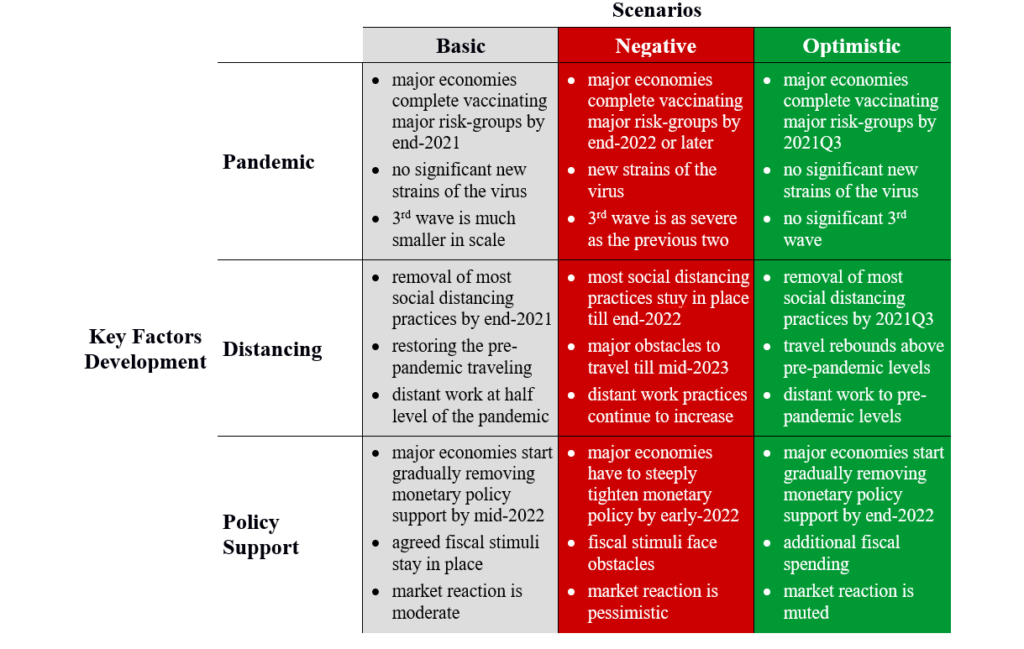The last 12 months have genuinely been a wild ride for the whole world. But in terms of companies development and growth the scale of maelstrom could be vividly seen through the lens of the corporate strategy. At first, in March-August 2020, there was the shock related to plummeting economic activity and sales, limited employee mobility, and astounding uncertainty about the future. The only corporate strategy was “bail out and run”. Everybody thought only about survival, long-term plans were all but forgotten.

fig 1. The Depths of the corona crisis Left chart: World GDP and trade dynamics (actual till 2020, IMF forecast for 2021-22). Source: IMF data Center chart: Apple mobility trends for G7 countries. Source: Apple Inc. Right chart: VIX index. Source: CBOE
Then, in September-December 2020, came the stabilization at the bottom. Situation calmed down albeit at the very low levels. Indeed, the depth of the fall varied with activity in many services sectors ground to a halt, while in sharp contrast to many previous crises manufacturing and investments did better, as well as the financial sector. However, in general the panic leveled out and CEOs and corporate strategists started thinking about the life after the crisis.

fig 2: Employment by sector. Source: OECD data
Since the start of 2021 the hope and the rebound have come. Multiple vaccines approval allowed to start the immunization process. The rates of vaccination are different by country but the world in general seems to be on the right track, so achieving herd immunity looks like a question of time. Managers’ optimism has also picked up in the recent months and now everybody is hastily developing the best strategies of corporate development for the years to come.

fig 3: PMI by country. Source: Bloomberg
So what should you look at when developing you company’s strategy in the not-so-brave new world?
To use a simple rule-of-thumb approach there are 3 key factors to consider:
- the prospects for dealing with the disease itself;
- the persistence of the social distancing measures and popularity of distance work after the pandemic is gone;
- the pace with which the major policymakers will be curbing fiscal and monetary stimuli.
So here these factors are grouped and ranged by the 3 major scenarios that any meaningful strategy usually considers. The strategic horizon is 3 years.

So you decide on the probability of each scenario and then you create your strategic growth plan placing resources accordingly. In any case, you company’s growth strategy should also take into account the industry your company is working in: services sectors are to stay more influenced by the future rebound dynamics than the rest parts of the economy.


